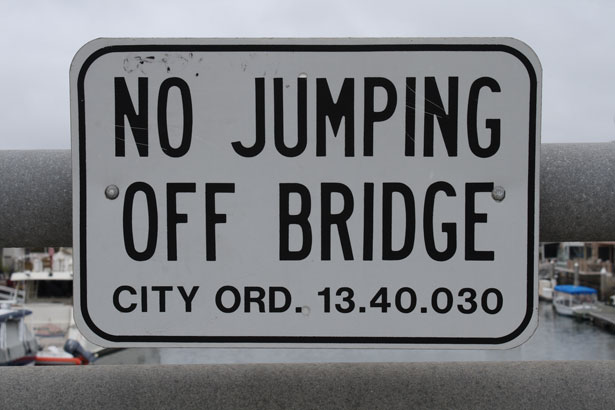Bungee Jumping in Vermont
Bungee Jumping in Vermont
Bungee Jumping Locations, Companies & Bridges
View Map for Bungee Jumping in Vermont in a larger map
Bungee jumping is a popular sport but there are VERY few professional companies around. We understand the options available are not ideal but that’s the nature of this sport. Due to the number of bungee jumping locations, most people will need to drive 100 miles or more to jump with a professional bungee company. If this is not a feasible option, we recommend searching for a theme park nearby which offers something similar to the bungee jumping experience. You may also consider participating in another extreme sport (such as skydiving) as locations may be more readily available.

There are no business listings for bungee jumping (a.k.a. “bungy” jumping) in Vermont at this time. The nearest location is the Great Canadian Bungee in Canada.
Great Canadian Bungee is located in Wakefield, Quebec. They offer bungee jumping at their stand alone bungee facility located 200 feet above a large pool of water. You can check them out in the YouTube videos below.
Are you interested in bungee jumping but cautious because you are not quite sure what to expect? Xcelerated Adventures offers professionally guided adventures for bungee jumping, whitewater rafting, kayaking, hang gliding, rock climbing, zip lining, hiking, camping and much more. Just name the adventure and their staff has mastered it. They will safely guide you through each adventure. Xcelerated Adventures has been there done that and loved the experience so much that they want to share their passion with everyone. Check them out!
We do the research so you can spend less time searching and more time enjoying the extreme sports you love. We search the internet for bungee jumping locations but as new professional bungee companies become available and others do not have a well known presence, letting us know these locations will help grow the online extreme sports community. We greatly appreciate your assistance.
Are you familiar with a new or unlisted company which offers bungee jumping in Vermont? Please recommend a bungee jumping company.
Bungee Jumping Safety:
Modern bungee jumping is a relatively safe sport due to operators rigorously checking calculations and the bungee equipment. Injuries and death can still occur as with any sport. Many ercial operators now use full body harnesses to avoid the possibility of a jumper becoming detached from the ankle attachment.
That’s an additional step some bungee jumping operators take to ensure the safety of their jumpers. Mistakes have occurred with miscalculations and equipment errors. Injuries that occur during bungee jumping despite safety measures are upper body intravascular pressure, eyesight damage, whiplash and neck damage.
There are two types of elastic ropes used in the sport of bungee jumping: braided and unbraided. A factory produced elastic rope, used by many commercial bungee operators, is a braided shock cord consisting of many latex strands enclosed in a durable outer cover. This rope gives a harder, sharper bounce. The second type of rope consists of unbraided cords which can be home-made. This rope produces a softer, longer bounce. Many commercial bungee jumping operators use a full body harness as a backup to the ankle attachment.
During a bungee jumping experience, several pieces of specialized equipment are used to ensure the safety and comfort of participants. Here are the primary pieces of equipment typically used in bungee jumping:
1. Bungee Cord: The bungee cord, also known as the bungee rope or elastic rope, is the main component of the bungee jumping system. It is made from strong, stretchable materials such as rubber or latex and is designed to absorb the energy of the jumper's fall and then recoil, propelling the jumper back up after reaching the maximum extension. Bungee cords are carefully selected and maintained to ensure their strength and elasticity.
2. Harness or Ankle Attachment: Participants are securely attached to the bungee cord using a harness or ankle attachment. The harness typically consists of straps that wrap around the jumper's body, securing them in place during the jump. Ankle attachments are straps or cuffs that secure around the jumper's ankles. Both harnesses and ankle attachments are designed to distribute the forces of the jump evenly across the jumper's body and provide a secure connection to the bungee cord.
3. Backup Systems: In addition to the primary bungee cord and attachment system, bungee jumping operations often employ backup systems to enhance safety. These backup systems may include secondary attachment points, redundant harnesses, or additional safety lines to prevent accidental detachment or equipment failure.
4. Safety Helmets: Depending on the jump site and operator, participants may be required to wear safety helmets during the jump. Helmets provide protection against head injuries and are particularly important for jumps from bridges or other structures with overhead obstacles.
5. Safety Gear for Operators: Bungee jumping operators also use specialized safety gear, including helmets, harnesses, and safety lines, to ensure the safety of participants and staff during the jump operation. Trained jump masters oversee the jumps and are responsible for ensuring that all safety protocols are followed.
Overall, the equipment used in bungee jumping is carefully selected, inspected, and maintained to meet strict safety standards and ensure a safe and enjoyable experience for participants. It's essential to choose reputable operators who prioritize safety and adhere to industry best practices when planning a bungee jumping adventure.
Bungee Jumping at Great Canadian Bungee
Bungee Jumping at Great Canadian Bungee
GoPro® HD Cameras: Bungee Jumping TV Commercial – You in HD
|
Choose a city in Vermont:
|
Choose a State for Bungee Jumping:
